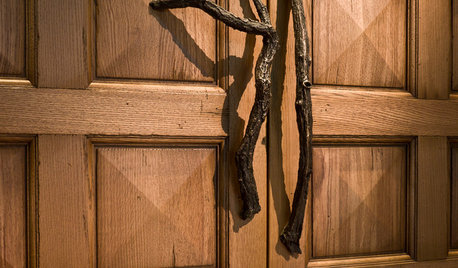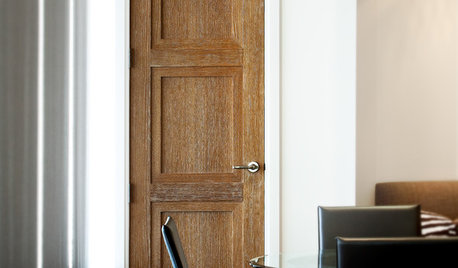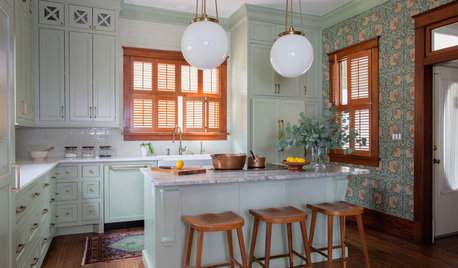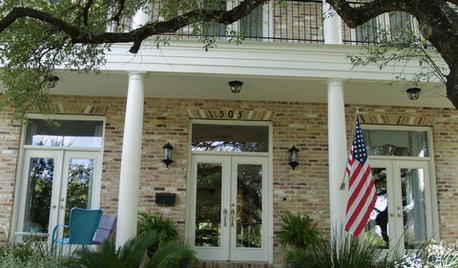Oak flooring...
jacqueocs
16 years ago
Related Stories

REMODELING GUIDESYour Floor: An Introduction to Solid-Plank Wood Floors
Get the Pros and Cons of Oak, Ash, Pine, Maple and Solid Bamboo
Full Story
WOODWoodipedia: Make a Solid Choice With Oak
Forget those low-end products of old. Red and white oak today are beautiful, versatile and relatively inexpensive
Full Story
REMODELING GUIDESRenovation Material: Cerused Oak
This traditional material adds welcome texture to the sleek surfaces of modern furniture, cabinetry and more
Full Story
KITCHEN OF THE WEEKKitchen of the Week: Goodbye, Honey Oak — Hello, Minty Green
After more than 30 years, the Kloesels revamped their space to reflect their rural country town and Victorian-style home
Full Story
HOUZZ TOURSHouzz Tour: A New Home Honors a Historic Neighborhood
Stained glass, red oak floors and other traditional details give a newly built home in Texas an antique feel that fits right in
Full Story
CALIFORNIA NATIVE PLANTSGreat Design Plant: Coast Live Oak
The stuff of legends and memories, this California tree is one to build a whole landscape around
Full Story
REMODELING GUIDESDesigner Confessions: Torn Between Wood Floors
19 Photos to Help You Choose a Wood Floor Finish
Full Story
GREAT HOME PROJECTSWhat to Know Before Refinishing Your Floors
Learn costs and other important details about renewing a hardwood floor — and the one mistake you should avoid
Full Story
HOUSEKEEPINGHow to Clean Hardwood Floors
Gleaming wood floors are a thing of beauty. Find out how to keep them that way
Full Story
MATERIALSWhat to Ask Before Choosing a Hardwood Floor
We give you the details on cost, installation, wood varieties and more to help you pick the right hardwood flooring
Full Story






bus_driver
jacqueocsOriginal Author
Related Professionals
Clive Architects & Building Designers · San Angelo Architects & Building Designers · Katy Home Builders · Prichard Home Builders · Syracuse Home Builders · Country Club Hills General Contractors · Erlanger General Contractors · Glenn Dale General Contractors · Markham General Contractors · Martinsville General Contractors · Parkersburg General Contractors · Pasadena General Contractors · Sauk Village General Contractors · Seguin General Contractors · Solon General Contractorssue36
jacqueocsOriginal Author
sue36
brickeyee
jacqueocsOriginal Author
sue36
jacqueocsOriginal Author
sue36
jacqueocsOriginal Author
owl_at_home
Happykate
jacqueocsOriginal Author
ccoombs1
kateskouros
owl_at_home
kemptoncourt
ilmbg
brickeyee
thull
craftsman_lodge